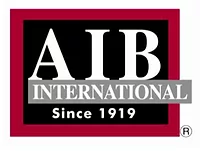Now is the Time for Compliance with FSMA and HARPC

If your food processing facility hasn’t taken a close look at the new provisions that have rolled out this month as part of the Food Safety and Modernization Act (FSMA), the time has come to pay attention.
September 2016 marks the date companies have to be in compliance with FSMA. This reform is the largest in the food safety industry in about 70 years, so it’s going to affect a lot of your operations, including your Integrated Pest Management (IPM) program. Throw in the new Hazard Analysis and Risk-Based Preventive Controls (HARPC) versus Hazard Analysis and Critical Control Points (HACCP) discussion into the mix, and things can get confusing quickly.
You may have questions, which is why we’ve put together some responses that will help you out.
What is FSMA and How Will It Affect Me?
At its core, FSMA is a move to make food safety a more proactive approach across the U.S. Signed into law in 2011, its goal is to keep the food supply safe by encouraging preventative techniques to avoid contamination, versus reacting to contamination problems after the fact.
With the first deadline upon us, it’s time to start working to become compliant. But which set of rules should you follow? Traditionally, HACCP guidelines were the ones to follow, but now many food processing facilities will have to follow a new, more stringent set of guidelines called HARPC.
Depending on the type of business in question, deadlines for compliance are as follows:
- Very small businesses averaging less than $1 million per year in annual sales of human food: September 2018
- Business subject to the Pasteurized Milk Ordinance: September 2018
- Small business with fewer than 500 full-time employees: September 2017
- All other businesses: September 2016
HARPC vs. HACCP – What’s the Difference?
HACCP is a global set of guidelines that addressed food safety through the analysis and control of biological, chemical and physical hazards from raw material production, procurement and handling, manufacturing, distribution and consumption of the finished product. It focused on CCPs to minimize risk.
Since the passing of FSMA, the U.S. Food and Drug Administration instituted a new set of guidelines that are a sort of evolution of HACCP regulations. These are the new HARPC regulations, meaning that even if you are compliant with HACCP, you will need to ensure compliance with the newer HARPC guidelines.
Looking for quick answers on food safety topics?
Try Ask FSM, our new smart AI search tool.
Ask FSM →
HARPC mandates that companies have written plans that identify potential risk-based hazards, enumerate how to prevent those hazards, list monitoring procedures and specify the actions to take if an issue does occur. It is also necessary to record of all of this information and keep it on hand.
The biggest difference in the HARPC standards is the aforementioned emphasis on risk-based prevention versus reaction. Food processors have to take into account all of the potential risks to their product, including naturally occurring hazards and anything that might intentionally or unintentionally get introduced to their facility. These potential risks need to be accounted for in your food safety plan along with actions to be taken if an issue does arise.
Because the potential hazards under HARPC go beyond CCPs, here are some new things to consider and include in your food safety plan:
- Biological, chemical, physical and radiological hazards
- Natural toxins, pesticides, drug residues, decomposition, parasites, allergens and unapproved food and color additives
- Naturally occurring hazards or unintentionally introduced hazards
- Intentionally introduced hazards (including acts of terrorism)
While HACCP standards generally did not apply to all food processors, HARPC covers almost every food processor.
If you already have a HACCP plan in place, it is far easier to modify it than start from scratch. Primarily, you want to focus on identifying and creating solutions for naturally occurring and unintentional issues that your food processing facility might face.
In addition, HARPC mandates that plans are reanalyzed at least every 3 years or more often as any internal changes impacting food safety are made.
How Does This Affect My IPM Program?
An IPM program already emphasizes prevention tactics over chemical treatments when dealing with pests, so your IPM plan won’t need to be overhauled. Your program needs to include regular monitoring, analysis and documentation.
Check the current IPM program in place and make sure that you are considering all of the potential risk factors listed in your food safety plan. Consider putting monitoring devices and traps around your facility to give you a better idea of where pests might be hiding or entering. Ask your pest management professional to give you regular updates on the status of these tools and don’t forget to document everything along the way.
It’s also a good idea to ask your pest management professional to provide training for your staff. Employees should always be encouraged to come forward immediately should a pest sighting occur. Every facility’s IPM program is different, so getting tips specific to your facilities specific pest issues will be a huge help in the fight against invasive pests.
Becoming compliant takes time, as changes to your IPM program and to your facility’s everyday procedures can’t be done overnight. As FSMA starts to kick in, you’ll be a step ahead of the game if you start making these proactive and preventive changes now.
Dr. Zia Siddiqi is director of quality systems for Orkin. A board certified entomologist with more than 35 years in the industry, Siddiqi is an acknowledged leader in the field of pest management. For more information, e-mail zsiddiqi@orkin.com or visit OrkinCommercial.com.








